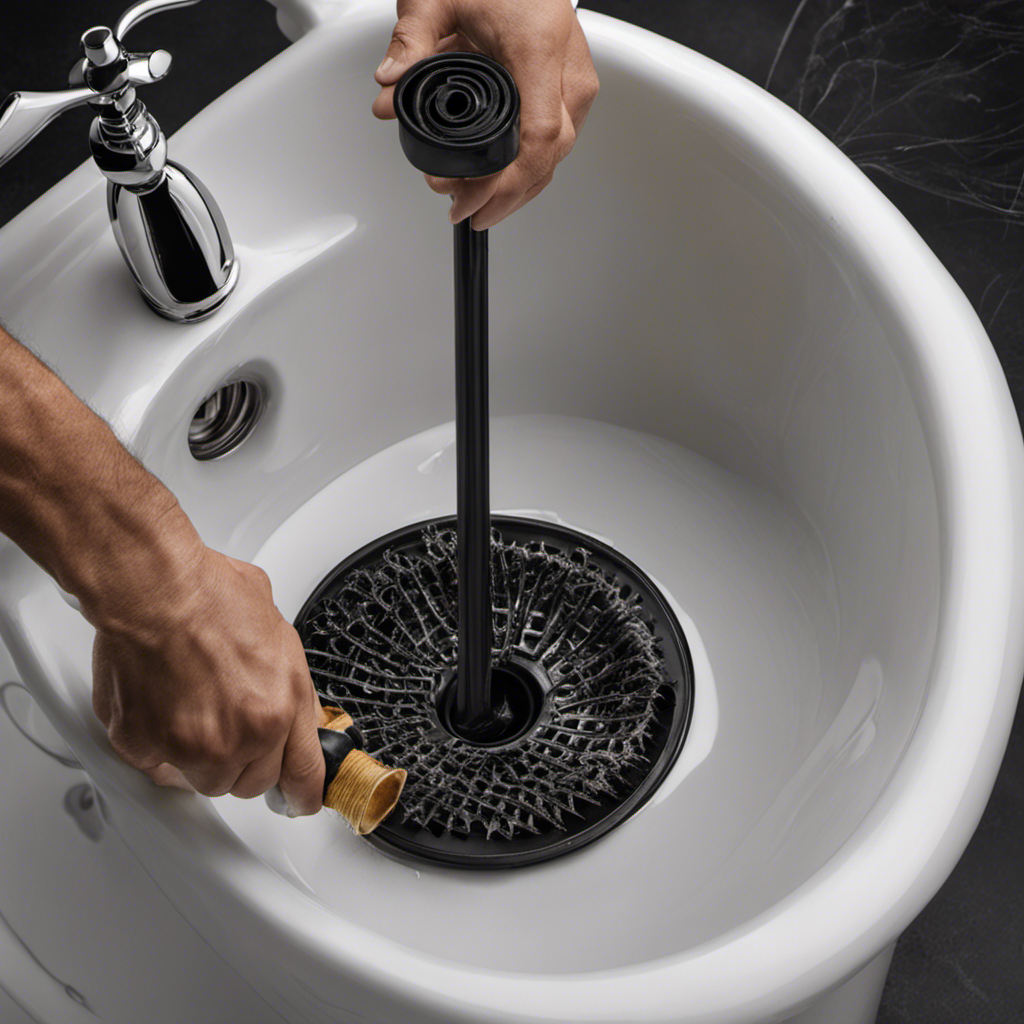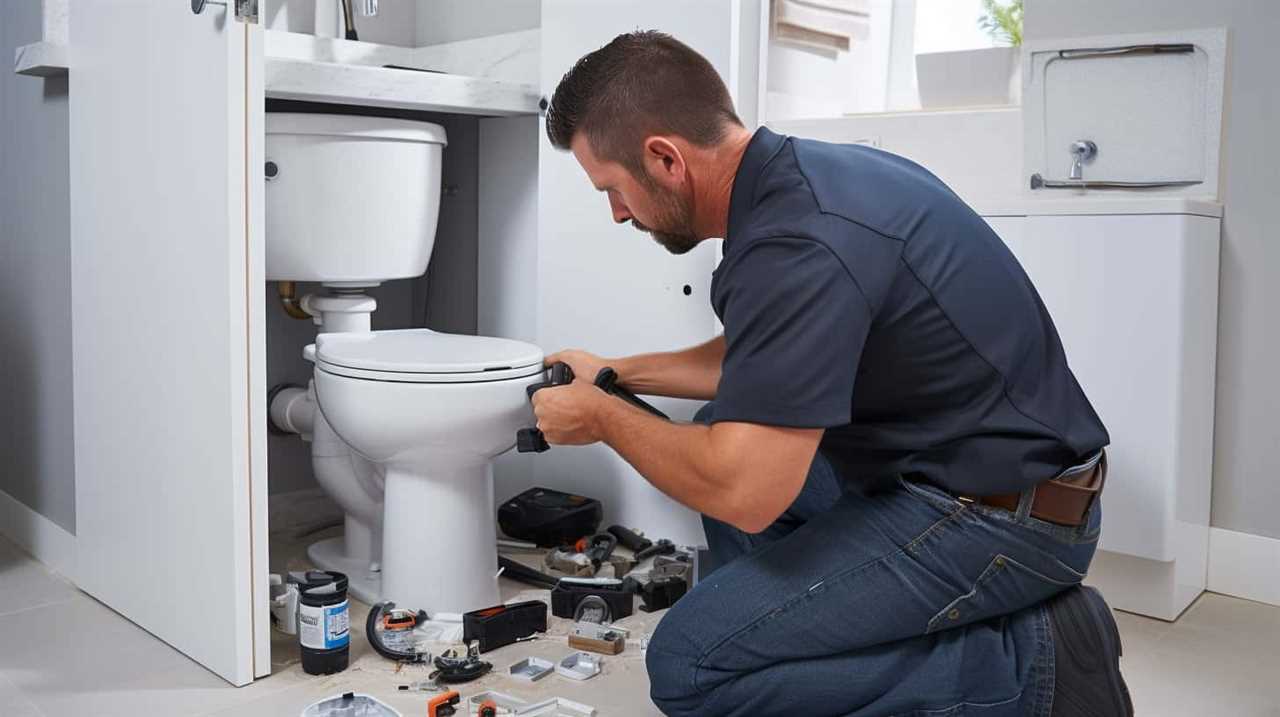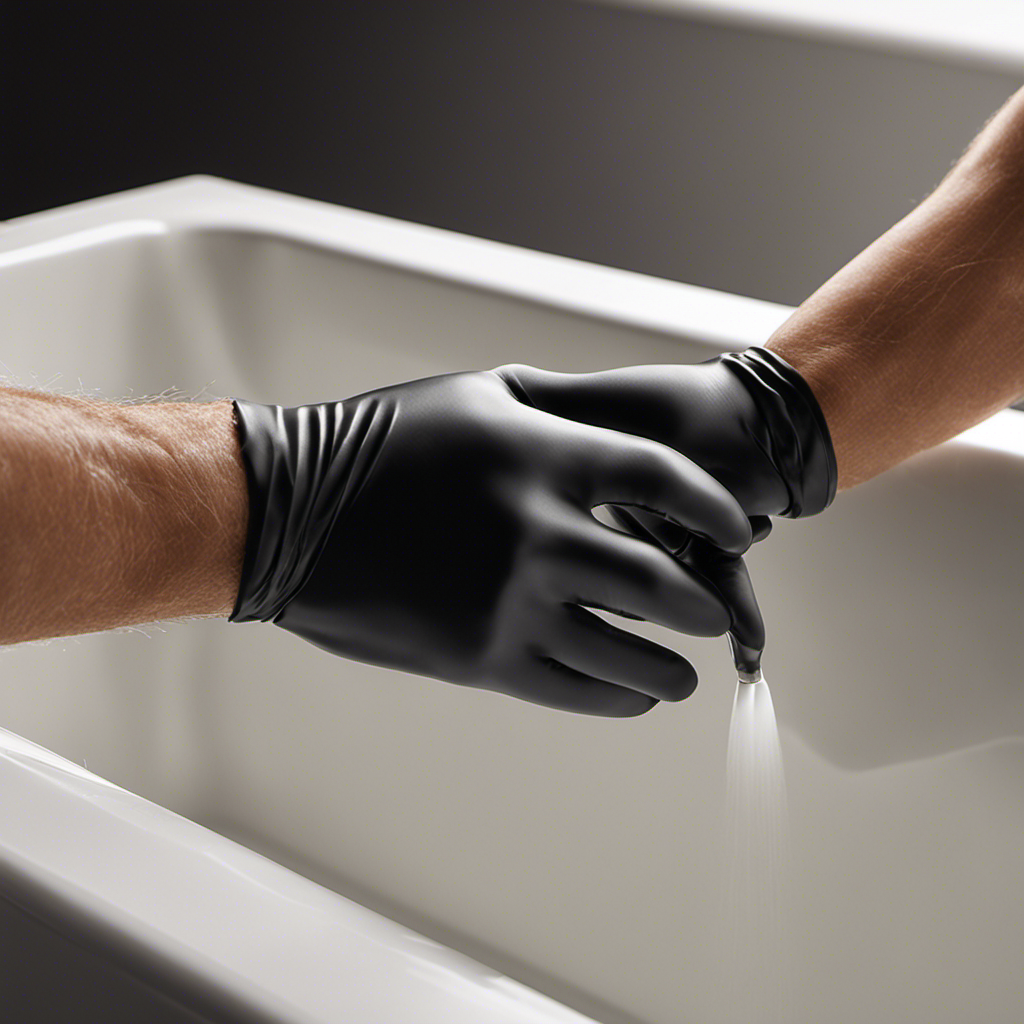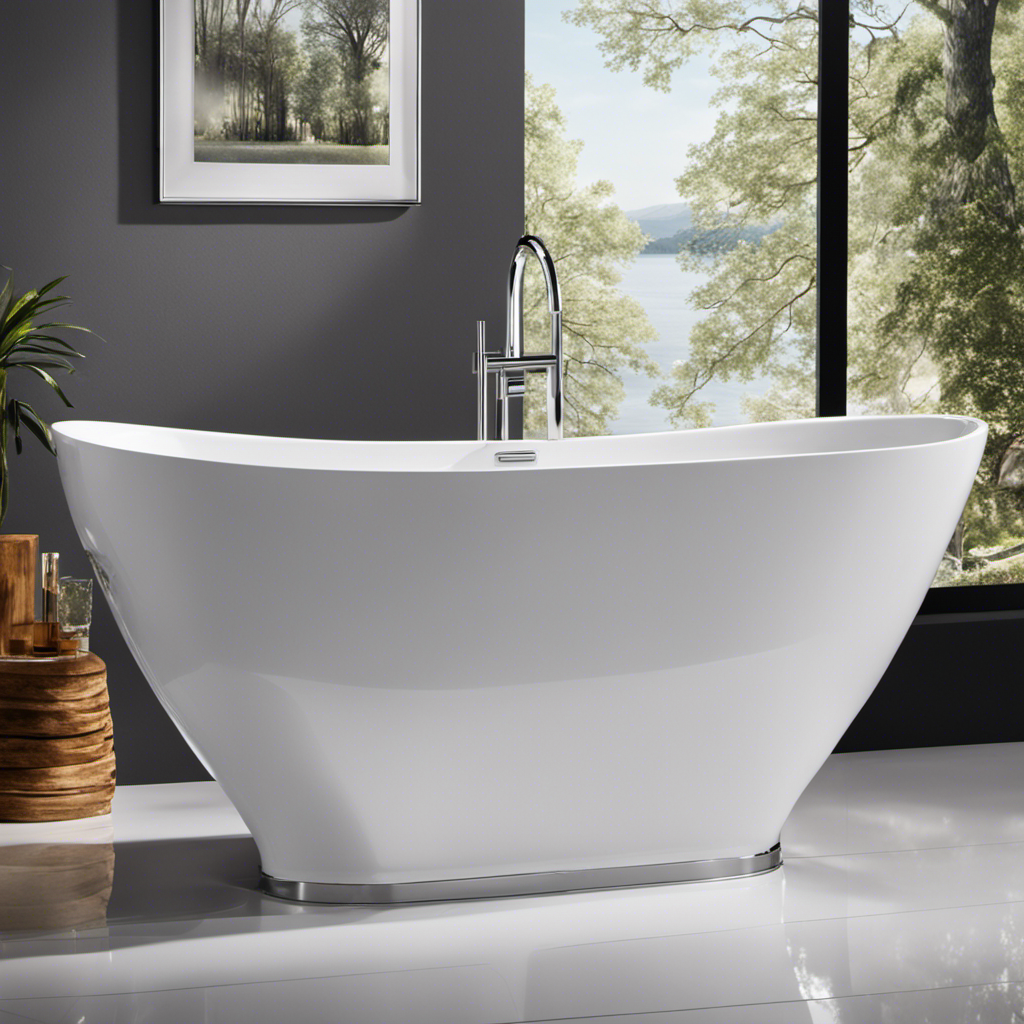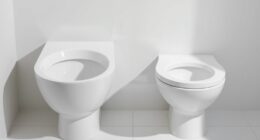So, you’ve got a clogged bathtub drain. Trust me, I feel your frustration. But fear not, my friend, because I’ve got the solution for you.
In this article, I’m going to show you exactly how to clean that stubborn drain and get your tub flowing smoothly again. We’ll cover everything from removing visible debris to using natural drain cleaners and even tackling those stubborn clogs.
So grab your tools, roll up your sleeves, and let’s get to work!
Key Takeaways
- Regular cleaning and maintenance of a bathtub drain is important to prevent clogs and maintain proper drainage.
- Natural drain cleaners are safer for the environment and gentle on plumbing, effectively breaking down organic materials.
- Tools and materials such as a plunger, drain snake, and cleaning solutions specifically designed for removing clogs and buildup are essential for cleaning a bathtub drain.
- Safety precautions should be taken while unclogging a bathtub drain, such as wearing safety goggles and rubber gloves, and avoiding excessive force that may damage the pipes.
Understanding the Importance of Cleaning a Bathtub Drain
Understanding the importance of cleaning a bathtub drain is crucial for maintaining proper drainage and preventing clogs. Regular cleaning is essential to remove hair, soap scum, and other debris that can accumulate over time. Neglecting to clean the drain can lead to slow drainage and even complete blockages, causing water to back up and potentially damage your plumbing system.
By regularly cleaning your bathtub drain, you can ensure that water flows smoothly and efficiently, preventing any potential issues. Additionally, using natural drain cleaners offers several benefits. They are safer for the environment, as they do not contain harsh chemicals, and they are often gentler on your plumbing system.
Natural drain cleaners can effectively break down organic materials, keeping your drain clean and odor-free.
Gathering the Necessary Tools and Materials
When it comes to maintaining a clean and functional bathtub drain, having the right cleaning supplies is essential.
A few key items that should be in your arsenal include a plunger, a drain snake, and a cleaning solution specifically designed for removing clogs and buildup.
Additionally, proper drain maintenance involves regular cleaning and preventative measures to ensure that your drain remains free of debris and functions properly.
Essential Cleaning Supplies
To clean your bathtub drain, you’ll need a few essential cleaning supplies. These supplies are necessary to effectively remove any clogs or buildup in your drain. The table below provides a visual representation of the cleaning supplies that are commonly used in bathtub drain cleaning techniques.
| Cleaning Supplies | Description |
|---|---|
| Plunger | A rubber suction cup used to create pressure and force out clogs. |
| Drain snake | A flexible tool with a coiled wire that can reach deep into the drain to remove stubborn clogs. |
| Baking soda and vinegar | A natural and effective combination that helps break down and dissolve debris in the drain. |
| Chemical drain cleaner | A powerful solution that can dissolve hair, soap scum, and other debris, but should be used with caution. |
Using these essential cleaning supplies, you can effectively clean your bathtub drain and restore proper drainage. Remember to follow the instructions on the products and take necessary safety precautions.
Proper Drain Maintenance
Make sure you regularly maintain your drains to prevent clogs and ensure proper water flow. Neglecting drain maintenance can lead to costly repairs and inconvenience. Here are three essential steps to keep your drains in optimal condition:
-
Inspect and clean the drain stopper: Remove the drain stopper and clean any debris or hair that may have accumulated. This prevents clogs and allows water to flow freely.
-
Flush the drain with hot water: Once a month, pour boiling water down the drain to flush out any build-up and prevent rust. This simple step helps maintain the integrity of your pipes.
-
Avoid chemical cleaners: Chemical drain cleaners may seem convenient, but they can corrode pipes and cause long-term damage. Instead, opt for natural alternatives such as baking soda and vinegar to keep your drains clean and free from harmful chemicals.
Removing Visible Debris From the Drain
You can easily remove visible debris from the drain using a pair of gloves and a small brush.
To clear hair clogs, start by wearing the gloves to protect your hands. Then, use the small brush to gently remove any hair or other debris that is visible in the drain. Be sure to brush in a downward motion to dislodge the clog and allow it to flow freely down the drain. This will prevent any buildup and potential blockages.
Additionally, to prevent soap scum from clogging the drain, it is important to regularly clean the drain with a mixture of hot water and vinegar. This will help dissolve any soap residue and keep your drain clear and functioning properly.
Using a Plunger to Clear Clogs
Using a plunger is an effective way to clear clogs in the drain. When using a plunger, make sure to create a tight seal around the drain opening to maximize suction.
Here are three key points to keep in mind when using a plunger:
- Apply downward pressure: Push down firmly on the plunger to create a strong suction that dislodges the clog.
- Use quick, forceful plunges: Rapidly push and pull the plunger to generate enough pressure to break up the obstruction.
- Be patient: It may take several attempts before the clog is completely cleared, so don’t give up too soon.
While a plunger is a reliable tool, there are also plunger alternatives available if you prefer a different method to clear common bathtub drain issues.
Now, let’s explore another effective method using baking soda and vinegar as a natural drain cleaner.
Using Baking Soda and Vinegar as a Natural Drain Cleaner
Now, let’s dive into how baking soda and vinegar can naturally clear clogs in your drain. Baking soda, also known as sodium bicarbonate, offers numerous benefits when it comes to cleaning drains. Its abrasive nature helps to break down and dissolve stubborn clogs, while also neutralizing foul odors. When combined with vinegar, a powerful acid, the reaction produces carbon dioxide gas, creating a foaming action that further aids in dislodging debris and clearing the drain. Vinegar is a versatile alternative to harsh chemical cleaners, as it is an effective disinfectant and deodorizer. Together, baking soda and vinegar create a dynamic duo for maintaining a clean and clog-free drain. See the table below for a detailed step-by-step guide on using baking soda and vinegar as a natural drain cleaner.
| Steps to Use Baking Soda and Vinegar as a Natural Drain Cleaner |
|---|
| 1. Pour 1/2 cup of baking soda down the drain. |
| 2. Follow with 1 cup of vinegar. |
| 3. Let the mixture sit for 15-30 minutes. |
| 4. Flush the drain with hot water. |
Using a Plumbing Snake to Remove Stubborn Clogs
When it comes to removing stubborn clogs, using a plumbing snake can be highly effective.
In this discussion, I will explore the effectiveness of a plumbing snake in unclogging drains, demonstrating the proper technique for using it, and highlighting the necessary safety precautions.
Plumbing Snake Effectiveness
The plumbing snake isn’t always the most effective tool for clearing a bathtub drain. While it can be useful for removing simple clogs, it may not be able to handle more stubborn blockages. Here are three alternatives to consider when the plumbing snake falls short:
-
Chemical drain cleaners: These powerful solutions work by breaking down organic matter, but they can be harsh on pipes and should be used with caution.
-
Plunger: A plunger creates a vacuum seal and applies pressure to dislodge clogs. It is a versatile tool that can be used for both sinks and bathtubs.
-
Hydro jetting: This method uses high-pressure water streams to blast away debris and clear the drain. It is best performed by professionals.
When choosing the right plumbing snake, consider factors such as the length and diameter of the snake, as well as the type of clog you are dealing with. It’s important to have the right tool for the job to effectively clear your bathtub drain.
Proper Technique Demonstration
A video tutorial can show you the proper technique for using a plumbing snake.
In this step-by-step demonstration, I will guide you through the process of effectively cleaning your bathtub drain.
First, make sure you have the right type of snake for the job.
Attach the snake to the handle and carefully insert it into the drain.
Rotate the snake clockwise as you push it further into the pipe.
Once you feel resistance, continue rotating and pushing until the snake breaks through the clog.
Slowly retract the snake, ensuring any debris is removed from the drain.
Finally, flush the drain with hot water to ensure it is completely clear.
Safety Precautions While Unclogging
To ensure a safe unclogging experience, it’s important to take proper precautions. Here are some safety measures you should follow:
- Wear safety goggles to protect your eyes from any debris that may splash during the unclogging process.
- Use rubber gloves to prevent direct contact with chemicals or bacteria that may be present in the drain.
- Have a bucket or a large container nearby to catch any excess water or debris that may come out of the drain.
By using the appropriate safety equipment and following these precautions, you can minimize the risk of injuries while unclogging your bathtub drain.
Now that we’ve covered the safety aspect, let’s move on to preventing future drain build-up with regular maintenance.
Preventing Future Drain Build-Up With Regular Maintenance
Regularly cleaning your bathtub drain can help prevent future build-up. By implementing regular maintenance, you can ensure that your drain remains clear and free from clogs.
To prevent future buildup, start by removing any visible debris from the drain opening using a pair of pliers or tweezers.
Next, mix a solution of equal parts baking soda and vinegar, and pour it down the drain. Allow the mixture to sit for about 15 minutes, then flush it with hot water. This will help break down any grease or residue that may be accumulating in the drain.
Additionally, using a drain strainer can help catch hair and other particles before they enter the drain, reducing the chances of clogs.
Calling a Professional if DIY Methods Fail
If your attempts to unclog the drain using DIY methods fail, it may be time to call a professional. When it comes to clearing stubborn clogs, professionals have the expertise and specialized tools to get the job done efficiently.
Here are a few reasons why calling a professional is a smart choice:
-
Advanced techniques: Professionals have access to advanced techniques like hydro jetting or drain snaking, which can effectively remove even the most stubborn clogs.
-
Time-saving: Hiring a professional saves you time and effort. They can quickly diagnose the problem and fix it, allowing you to get back to your daily routine.
-
Cost considerations: While hiring a professional may come with a cost, it can save you money in the long run. Attempting DIY methods repeatedly without success can lead to more damage and costly repairs. Investing in professional help early on can prevent further issues and expenses down the line.
Frequently Asked Questions
Can I Use Bleach to Clean My Bathtub Drain?
Yes, I use bleach to clean my bathtub drain. However, there are alternative drain cleaners to bleach such as baking soda and vinegar that are also effective at removing clogs and keeping the drain clean.
How Often Should I Clean My Bathtub Drain?
I clean my bathtub drain regularly to prevent clogs. It’s important to know how often to clean it to maintain a smooth flow. The best products for cleaning bathtub drains are effective in removing debris.
Can I Use a Wire Hanger as a Substitute for a Plumbing Snake?
Yes, a wire hanger can be used as a substitute for a plumbing snake. However, it may not be as effective. The best methods for unclogging a bathtub drain include using a plunger or a drain cleaner specifically designed for tubs.
Is It Safe to Mix Baking Soda and Vinegar in My Bathtub Drain?
Yes, it is safe to mix baking soda and vinegar in my bathtub drain. This combination creates a chemical reaction that helps unclog and clean the drain. There are also alternative methods for cleaning bathtub drains.
What Are Some Common Signs of a Clogged Bathtub Drain?
When a bathtub drain is clogged, there are clear signs like slow draining, standing water, and unpleasant odors. To prevent clogs, regularly remove hair, use a drain cover, and avoid pouring grease or oil down the drain.
Conclusion
So there you have it, folks. Cleaning a bathtub drain may seem like a simple task, but it’s one that can easily be overlooked.
However, if you’re feeling adventurous and want to tackle this project yourself, go right ahead. Just remember, it’s not as easy as it looks.
But hey, who needs a functioning drain anyway? Let’s just let the water accumulate and create a nice little swimming pool in our bathroom. It’ll be like a mini spa day every time we take a shower.
Enjoy!
